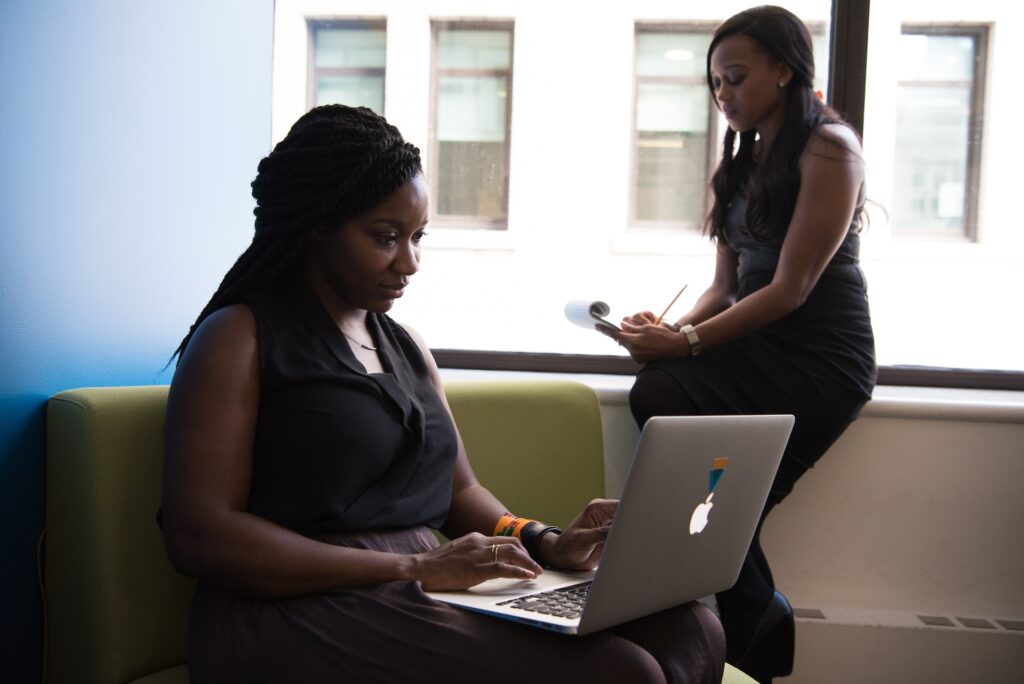This article will discuss the variances, between the K 1 fiancé visa and the spousal visa for marriage cards to assist you in determining which option suits you best. If you’re unsure, about which visa to pursue gaining insight into these aspects can simplify your choice immensely. Let’s explore some asked questions regarding these two immigration alternatives.
Quick Overview: K-1 Visa vs. Marriage Green Card
Before we get into the details, here’s a quick rundown:
- The K visa, also known as the Fiancé visa is intended for individuals who are engaged, to a U.S citizen and reside outside the United States.
- The spousal visa, also known as the marriage green card is designated for the spouse of a U.S. citizen or a lawful permanent resident residing in another country.
Which is Faster: A k-1 Visa or a Marriage Green Card?
In the past, the K-1 fiancé visa was processed faster than the marriage green card, which made it a popular choice for many couples. However, recently the processing times for both visas have become quite similar. In fact, in some cases, the fiancé visa can take longer than the spousal visa.
How Long Does It Take to Process?
- K-1 Fiancé Visa: Processing time for the K-1 visa is currently around 13 to 18 months, which is longer than the I-130 petition (the first step in the marriage green card process).
- Marriage Green Card: The I-130 petition, part of the marriage green card process, takes about 9 to 13 months to process.
Keep in mind, that these are just the initial steps in the process, and the time it takes to get the visa in hand depends largely on where you’re applying from.
How Much Does It Cost?
- Marriage Green Card: The total cost for the marriage green card application is about $1,200, which includes the necessary steps to adjust your status once you are in the U.S.
- K-1 Fiancé Visa: The K-1 visa is generally more expensive, costing around $2,000, and this also includes the adjustment of status (AOS) fees that the fiancé will need to pay once they arrive in the U.S.
But, keep in mind that immigration fees are increasing soon. As of May 2023, the K-1 visa could go up significantly in cost. The spousal visa will increase slightly, to around $1,485. However, the K-1 visa will jump to over $3,000. This increase is due to higher fees for the adjustment of status process, including the employment authorization document (EAD) and advance parole travel documents, which allow the fiancé to travel while their adjustment is pending.
Which Option Should You Choose?
If you’re trying to save money and time and you’re able to get married outside the U.S., the marriage green card might be the more affordable and quicker option. But if you’re planning to get married in the U.S., or the fiancé visa works better for your specific situation, the K-1 visa could still be the right choice, despite the higher costs.
What Are the Red Flags USCIS Officers Look For in Fiancé and Spousal Visa Applications?
When reviewing fiancé (K-1) and spousal (CR-1/IR-1) visa applications, USCIS officers are trained to identify potential red flags that may indicate fraud or a lack of a bona fide relationship. Key red flags include:
- Significant Age Differences: A large age gap, particularly if it contradicts cultural norms, can raise suspicions. For instance, a substantial age difference where the woman is significantly older than the man may be scrutinized more closely due to societal expectations in some cultures.
- Cultural Differences: Officers may question relationships that involve significant cultural or religious differences, especially if they are not well-documented. This includes ensuring that the couple has met in person and shares a genuine connection despite these differences.
- Inconsistent Information: Discrepancies in the information provided by the couple, such as differing accounts of how they met or their relationship history, can lead to further investigation.
- Limited Evidence of Relationship: Lack of supporting documentation, such as photos together, travel records, or communication logs, can indicate that the relationship may not be genuine.
How Does USCIS Handle Age Gaps or Cultural Differences in Relationships?
USCIS recognizes that age gaps and cultural differences are part of many legitimate relationships. However, they require applicants to provide substantial evidence to demonstrate the authenticity of their relationship. For couples with significant age differences, especially those exceeding 15 years, it is crucial to provide comprehensive documentation showing a genuine bond, such as:
- Joint Financial Accounts: Evidence of shared financial responsibilities can strengthen the case.
- Communication Records: Emails, texts, and social media interactions can help illustrate an ongoing relationship.
- Photos Together: Pictures from various stages of the relationship can serve as visual proof of time spent together.
Cultural differences may also be addressed by providing context about how these differences do not hinder the relationship’s legitimacy.
What Should You Do If Your Petition Is Stuck or Delayed?
If your petition is experiencing delays, consider the following steps:
- Check Processing Times: Visit the USCIS website to check current processing times for your specific application type.
- Contact USCIS: If your application exceeds normal processing times, you can contact USCIS through their customer service line or submit an inquiry via their online portal.
- Seek Assistance from an Immigration Attorney: If you encounter persistent issues, consulting with an immigration attorney can provide guidance and help navigate complex situations.
- File an Inquiry for Delayed Cases: If your application has been pending for more than 30 days beyond the posted processing time, you can file a request for assistance through the USCIS online system.
How Do You Prove a Bona Fide Relationship?
To prove a bona fide relationship for fiancé or spousal visa applications, applicants should gather various forms of evidence that demonstrate their commitment and connection. This includes:
- Joint Documents: Shared bank accounts, leases, insurance policies, and tax returns.
- Affidavits from Friends and Family: Statements from individuals who can attest to the authenticity of your relationship.
- Photos and Communication Records: A collection of photos together across different occasions and records of consistent communication.
- Travel Evidence: Proof of visits made to see each other if living apart.
Legal and Financial Concerns
What Financial Support Requirements Must Sponsors Meet?
Sponsors must demonstrate their ability to financially support their fiancé or spouse by meeting specific income requirements. Generally:
- The sponsor must have an income that is at least 125% above the federal poverty line for their household size.
- Sponsors must complete Form I-864 (Affidavit of Support) to show they can provide financial support without relying on government assistance.
What Happens if the Relationship Ends Before Approval?
If a relationship ends before visa approval:
- The petition will likely be denied unless there are compelling reasons to continue processing it (e.g., domestic violence situations).
- Applicants should consult with an immigration attorney to understand their options based on individual circumstances.
Can You Apply for a Fiancé or Spousal Visa While Living Abroad?
Yes, individuals living abroad can apply for a fiancé or spousal visa. The process involves submitting the petition through USCIS in the U.S., followed by consular processing at a U.S. embassy or consulate in the applicant’s country.
Post-Visa Approval
What Are the Next Steps After the Visa is Approved?
Once your visa is approved:
- Receive Your Visa Packet: The approved visa will be sent along with instructions on how to enter the U.S.
- Prepare for Entry into the U.S.: Ensure you have all required documents ready for inspection upon entry.
- Marriage Timeline: For K-1 visa holders, you must marry within 90 days of entering the U.S.; for spousal visas, you are already married.
How Soon Can You Work After Arriving in the U.S. on a Spousal or Fiancé Visa?
K-1 visa holders can apply for work authorization immediately upon arrival in the U.S., while spousal visa holders typically have work authorization upon entry but should apply for a Social Security number (SSN) as soon as possible.
What Are the Conditions for Maintaining Your Status After Entering the U.S.?
To maintain status:
- K-1 visa holders must marry within 90 days.
- Spousal visa holders should ensure compliance with any conditions attached to their visa status and file the necessary paperwork for permanent residency if applicable.
Insights and Advice from the USCIS Officer
What Was Your Most Memorable Experience as a USCIS Officer Reviewing These Cases?
Many officers recall instances where genuine love stories shine through complex applications. These experiences often reaffirm their commitment to ensuring fair assessments while recognizing authentic relationships.
What Advice Would You Give to Applicants to Increase Their Chances of Success?
Applicants are encouraged to:
- Provide comprehensive evidence of their relationship.
- Be honest and transparent throughout the process.
- Prepare thoroughly for interviews by reviewing their application details and being ready to discuss their relationship openly.
How Have Fiancé and Spousal Visa Policies Changed Over the Years?
Policies have evolved with increased scrutiny on relationships perceived as fraudulent. Enhanced requirements for documentation reflect efforts to ensure that only genuine relationships receive approval while still allowing legitimate couples access to immigration benefits.
What Is Something Most People Don’t Know About the Visa Process?
Many applicants underestimate the importance of detailed documentation; even small inconsistencies can lead to delays or denials. Thorough preparation is key to navigating this complex process successfully.
In conclusion, both visas have their pros and cons, depending on your circumstances. Make sure to carefully consider the timing, costs, and requirements before making your decision.
How Law and Visas Can Help?
At Law and Visas, our team of expert immigration consultants is here to make your travel to the US straightforward and successful. Whether you’re applying for a Spouse Visa, Green Card, Visitor Visa, or Study Visa, we handle every step from preparing your application to gathering the required documents.
Our immigration Consultants and Lawyers ensure that your application meets the highest standards, with no details missed. We’ll also keep you informed throughout the process and coordinate with the immigration office or embassy on your behalf.
Law and Visas has a strong record of helping clients secure the visas/permits they need in the US. Call us today at +234 812 5505 986 to learn how we can assist you.




